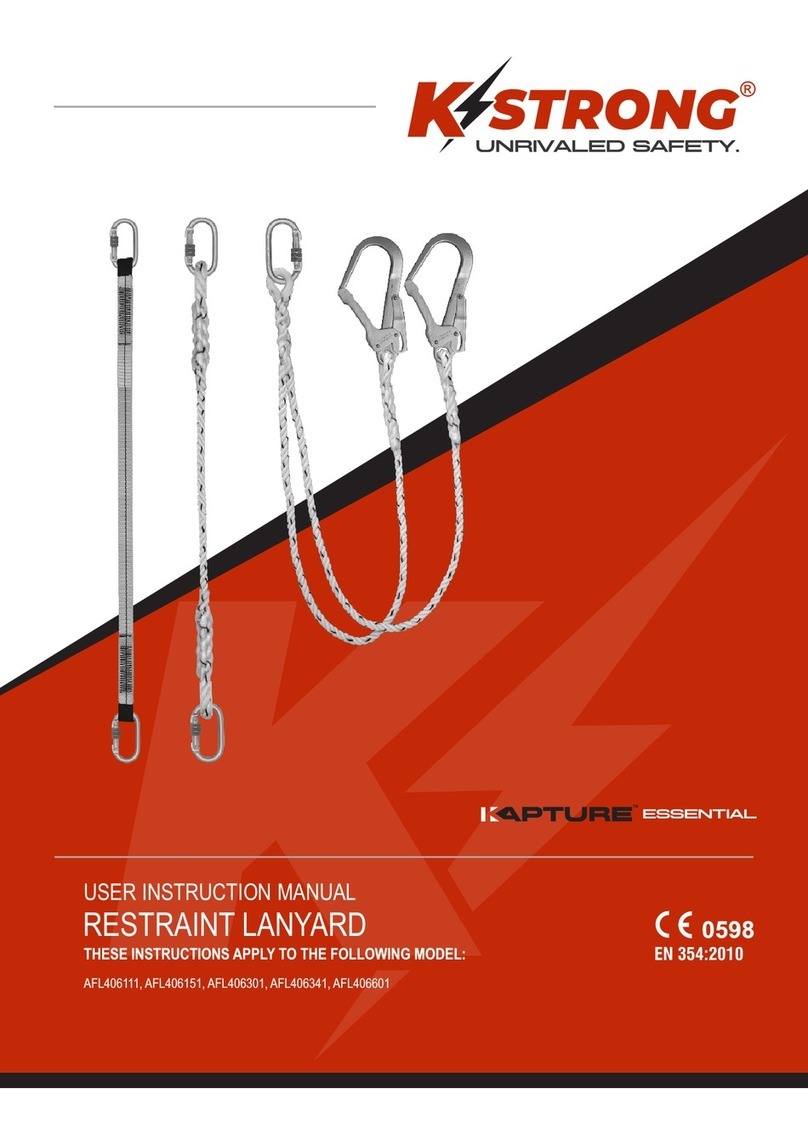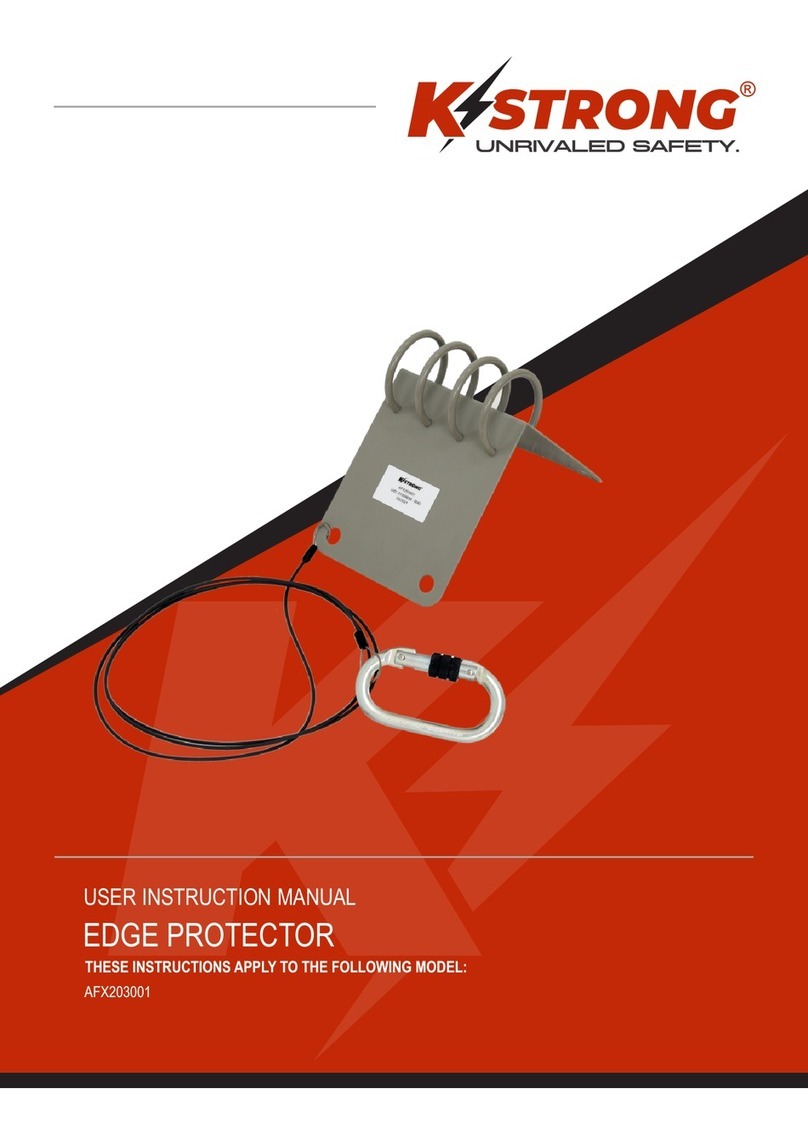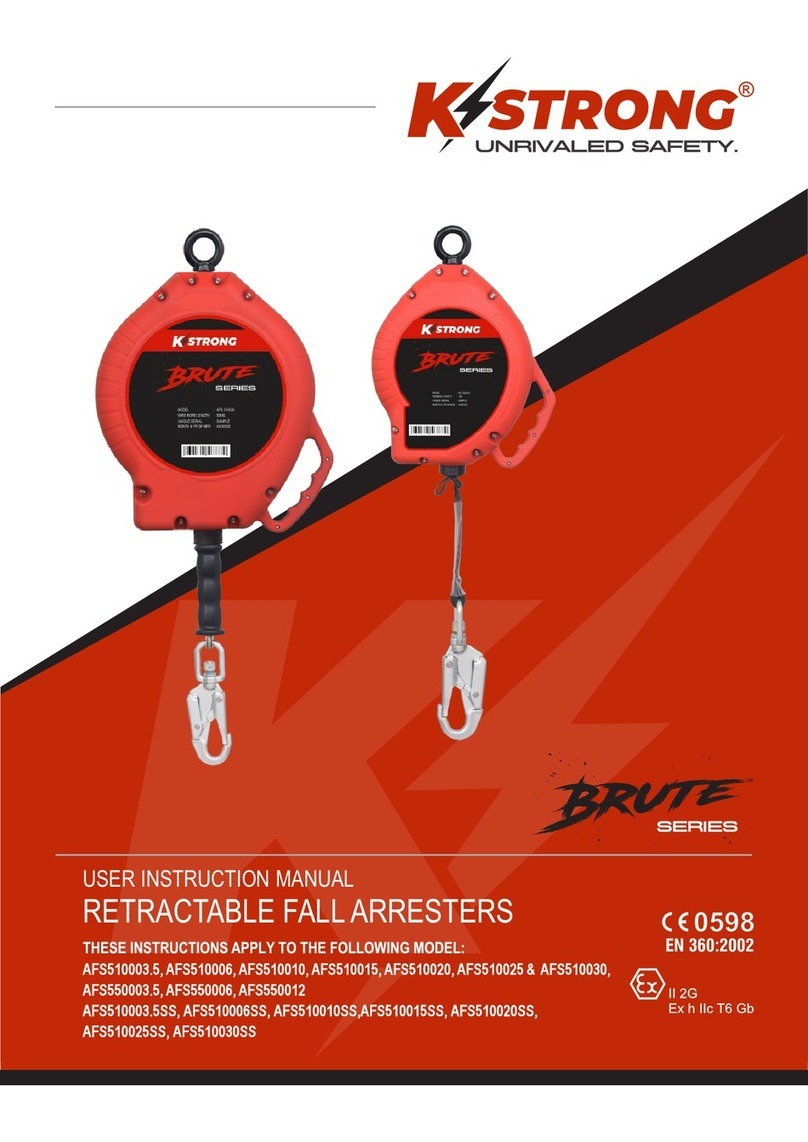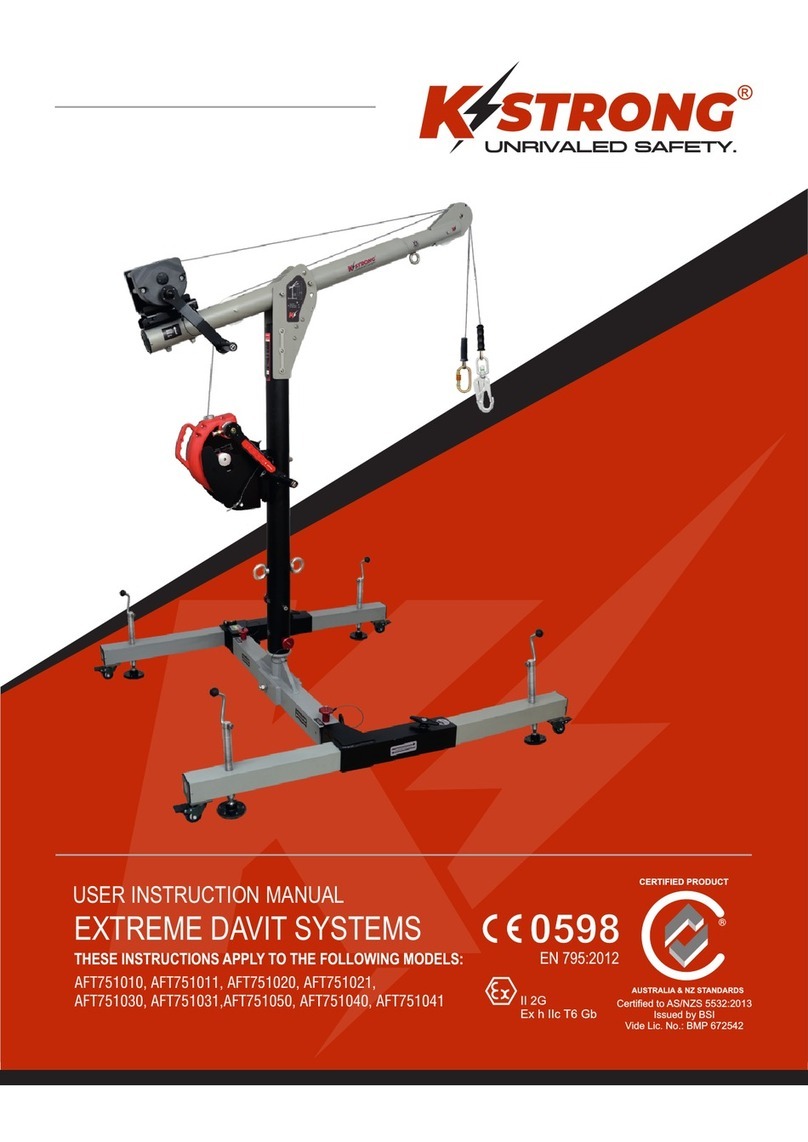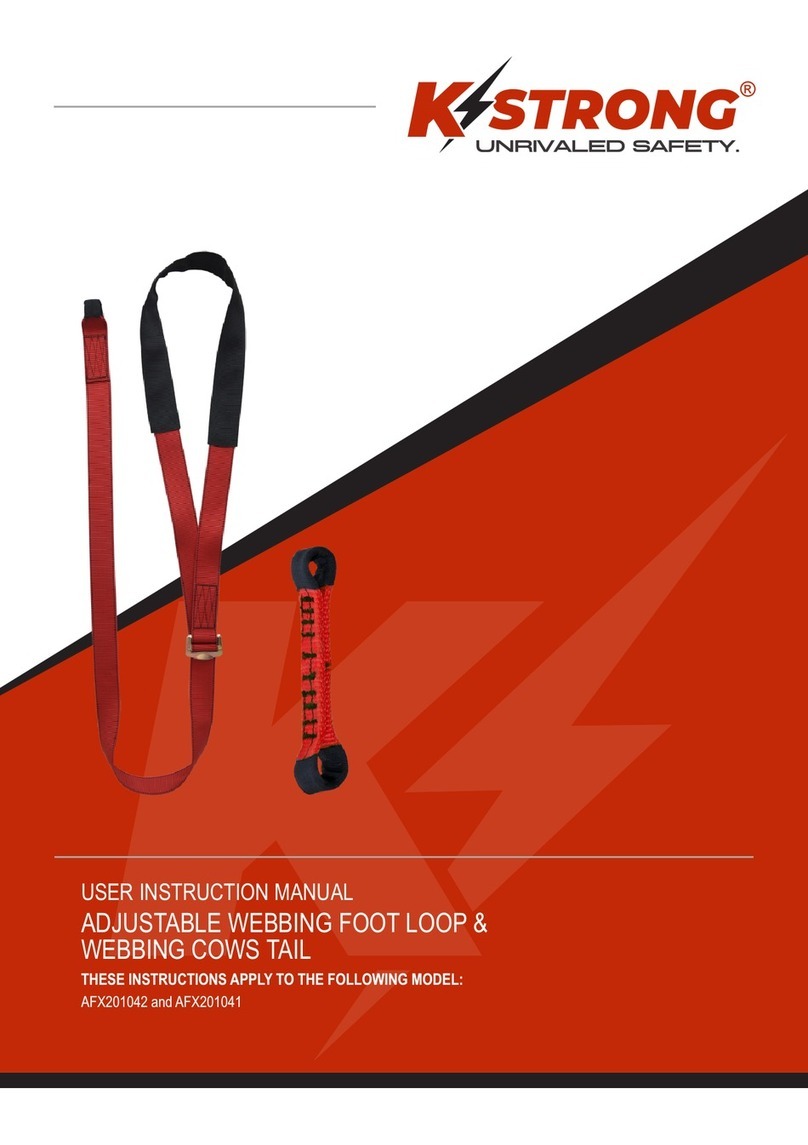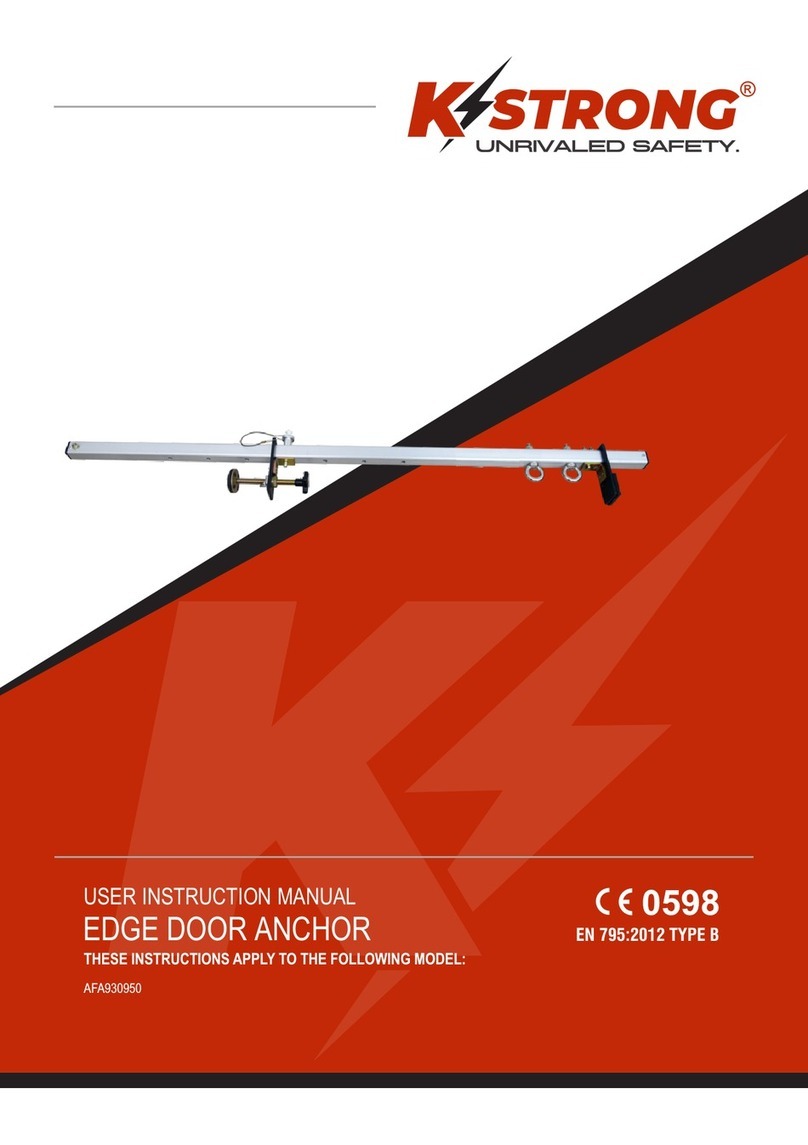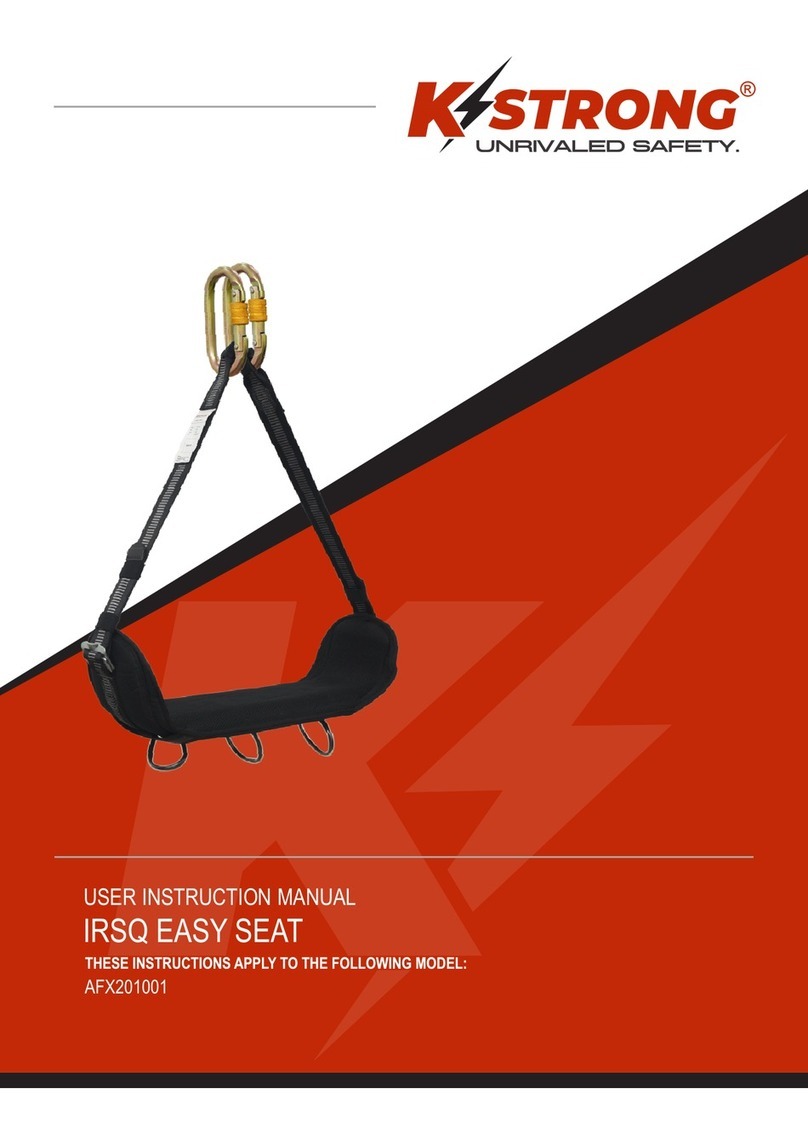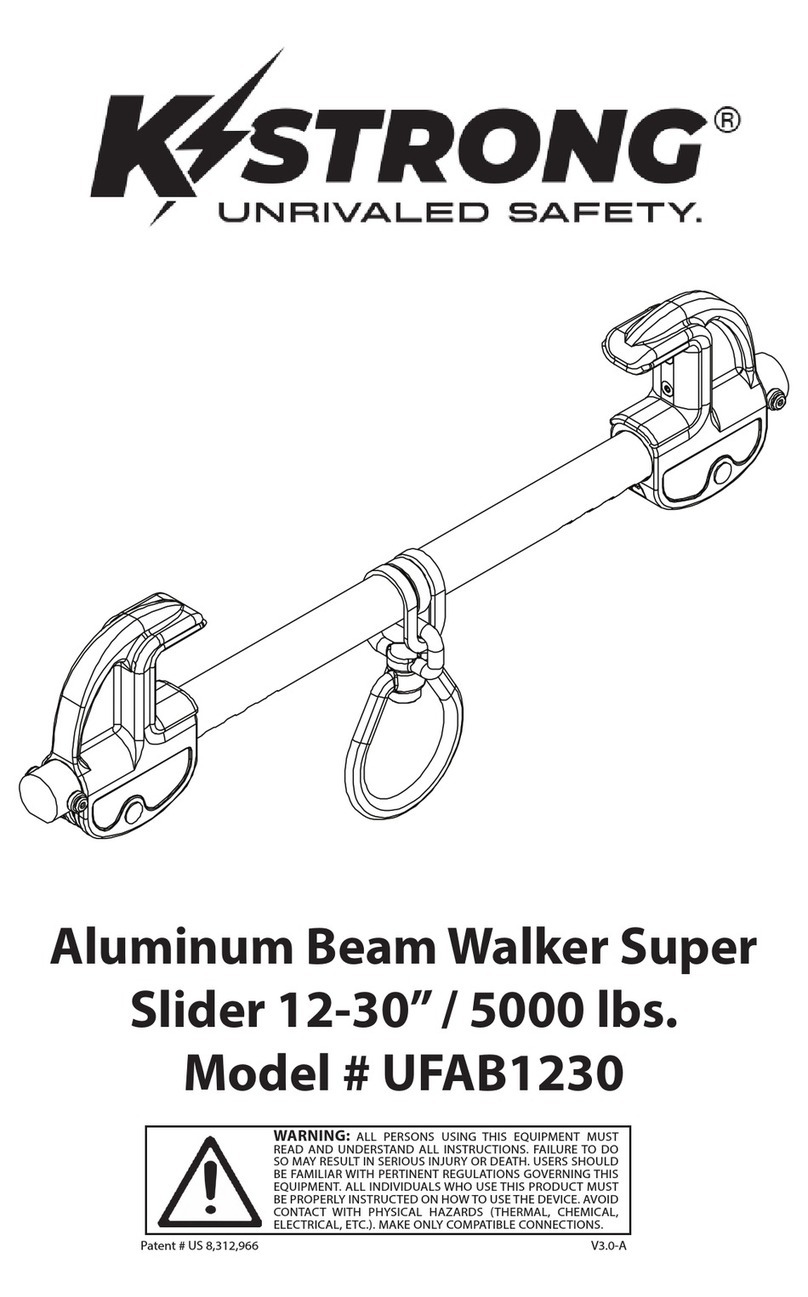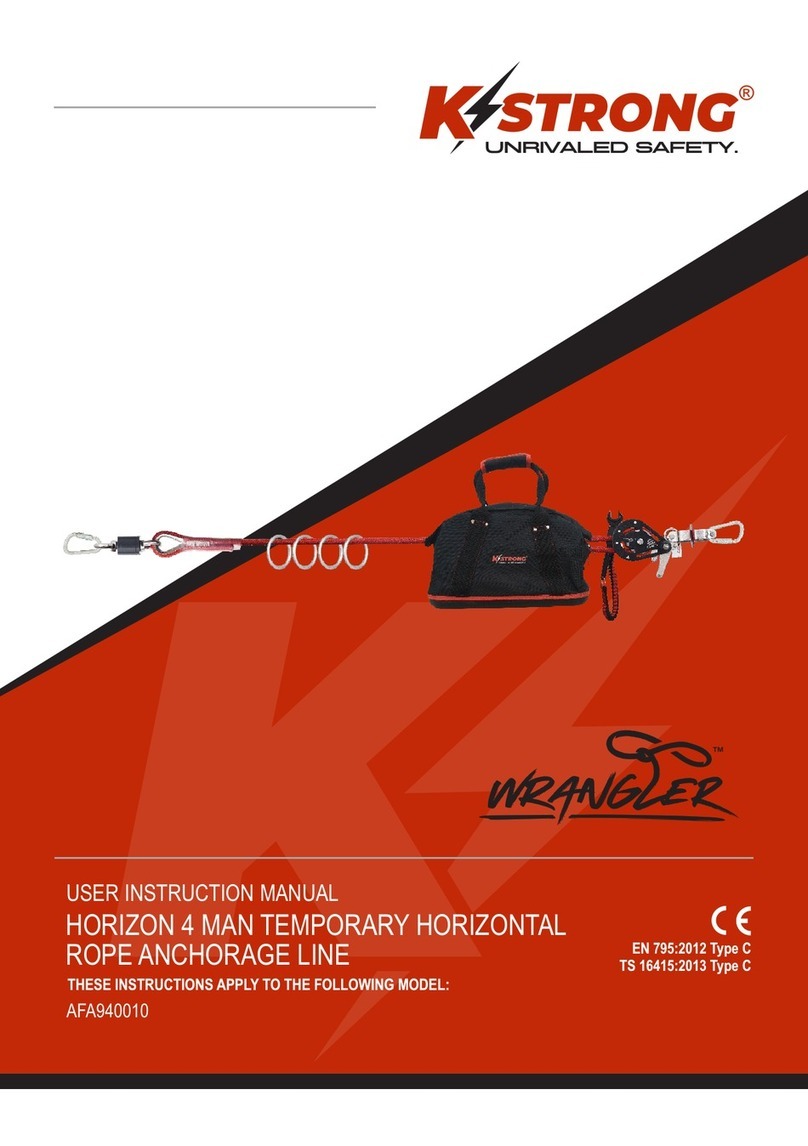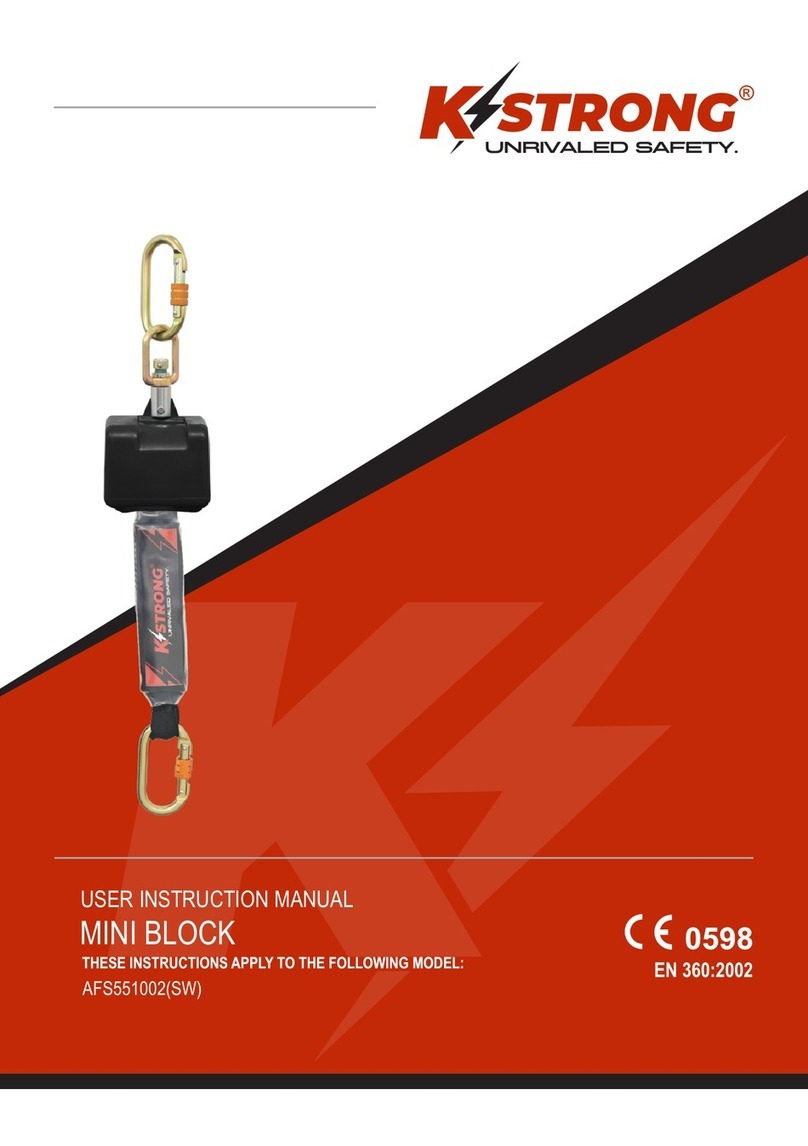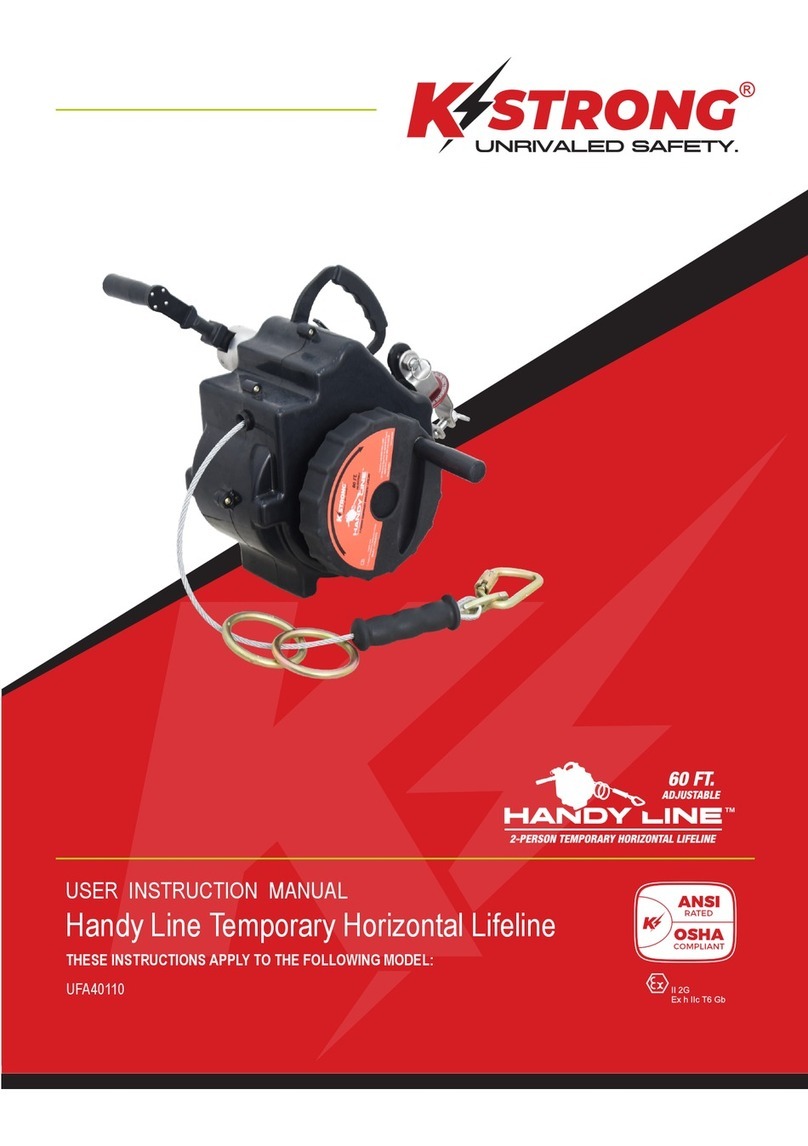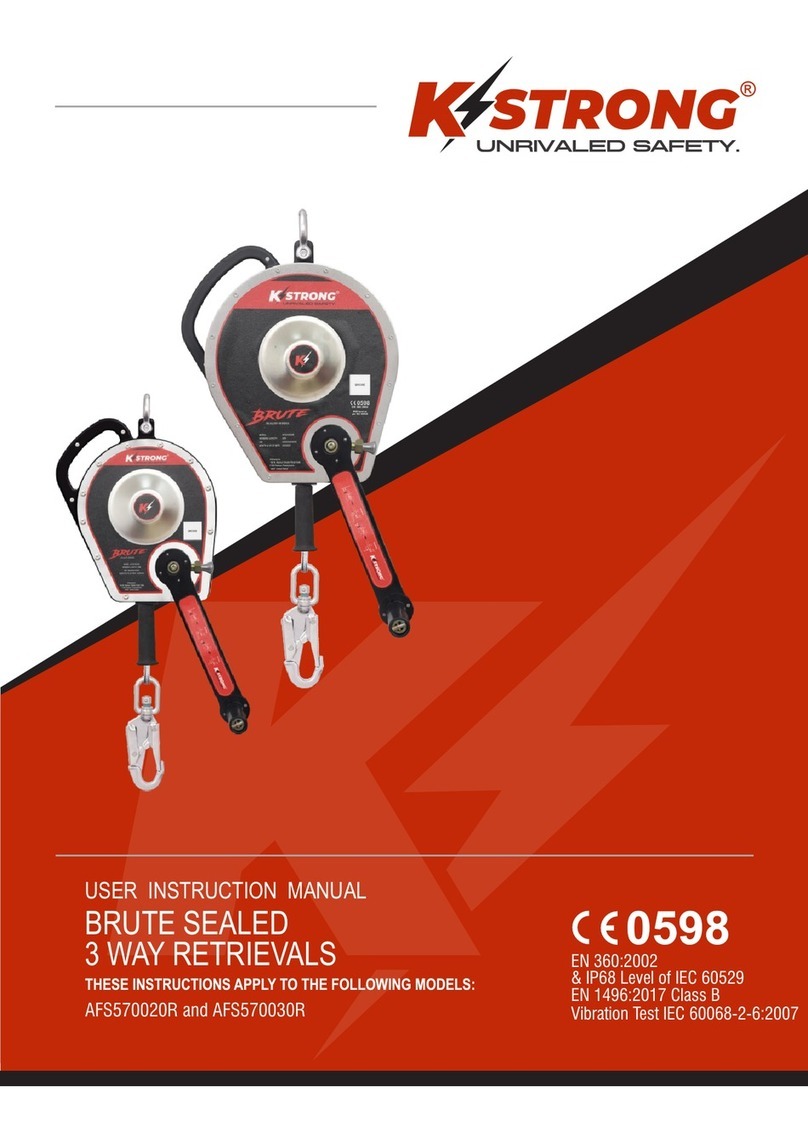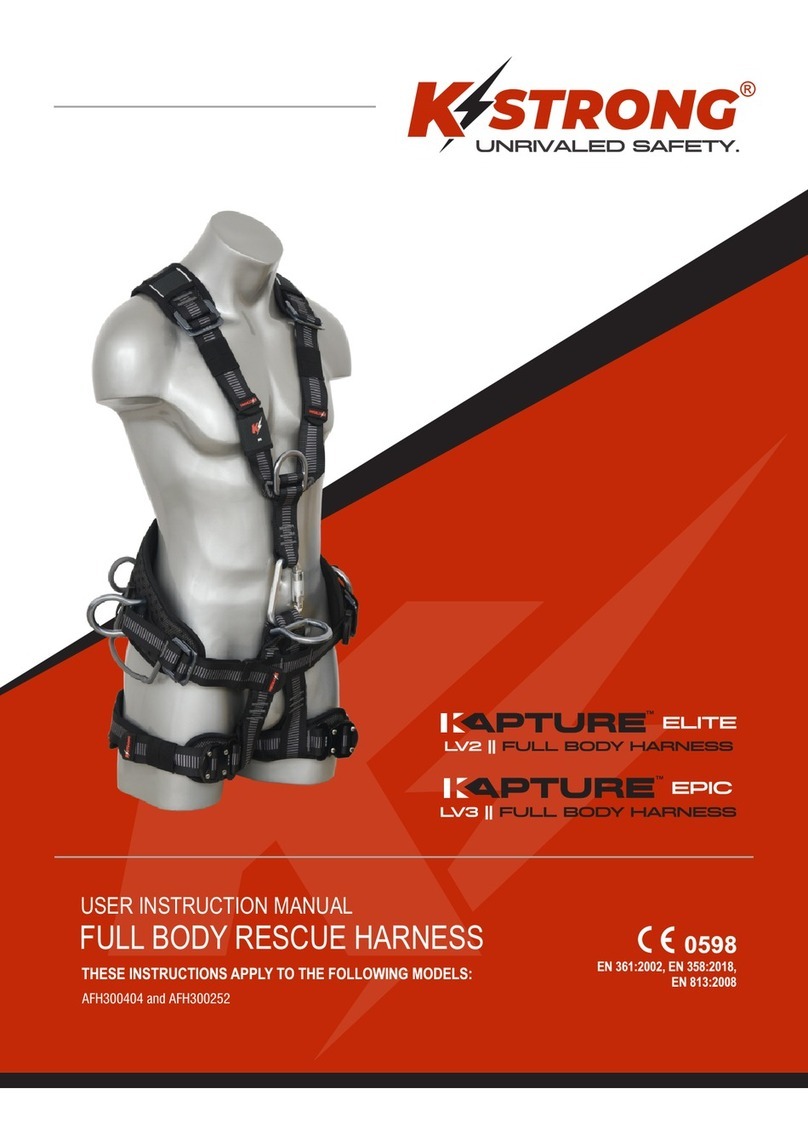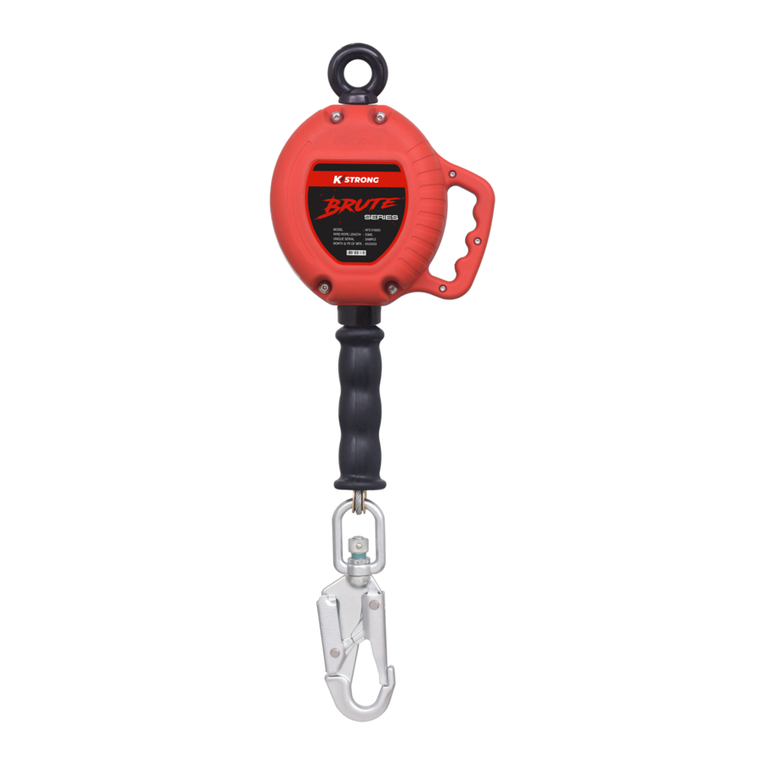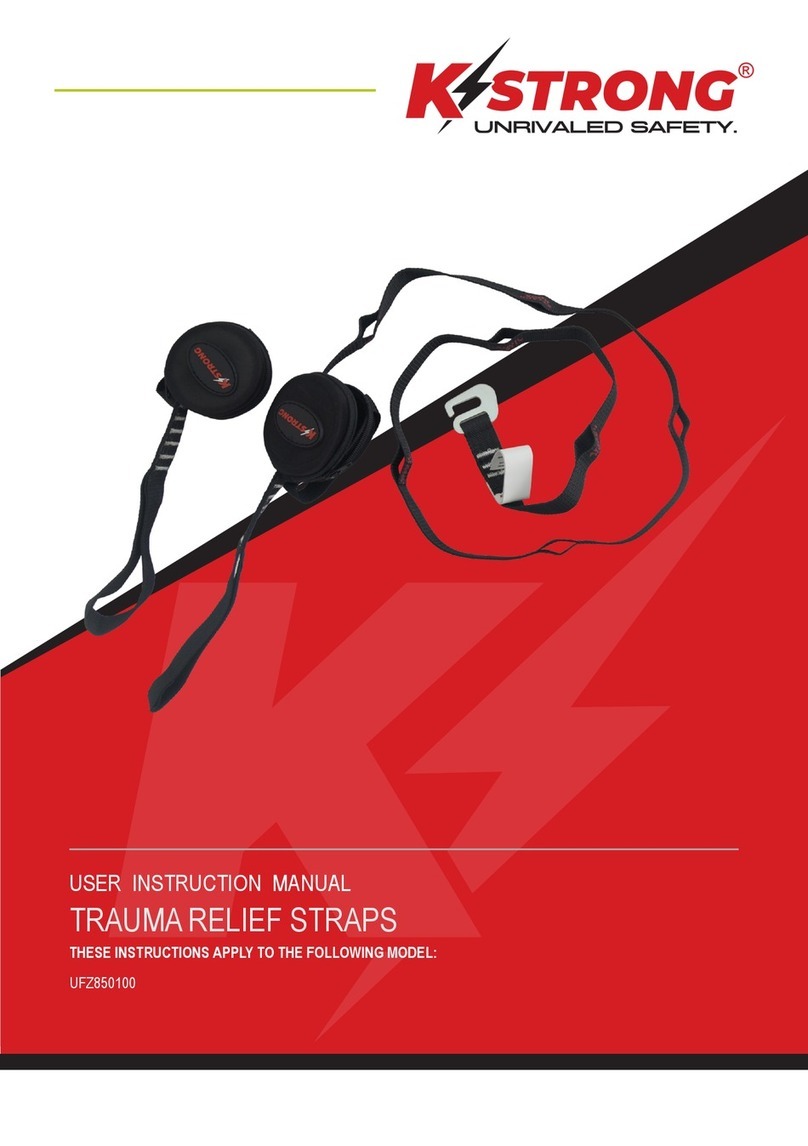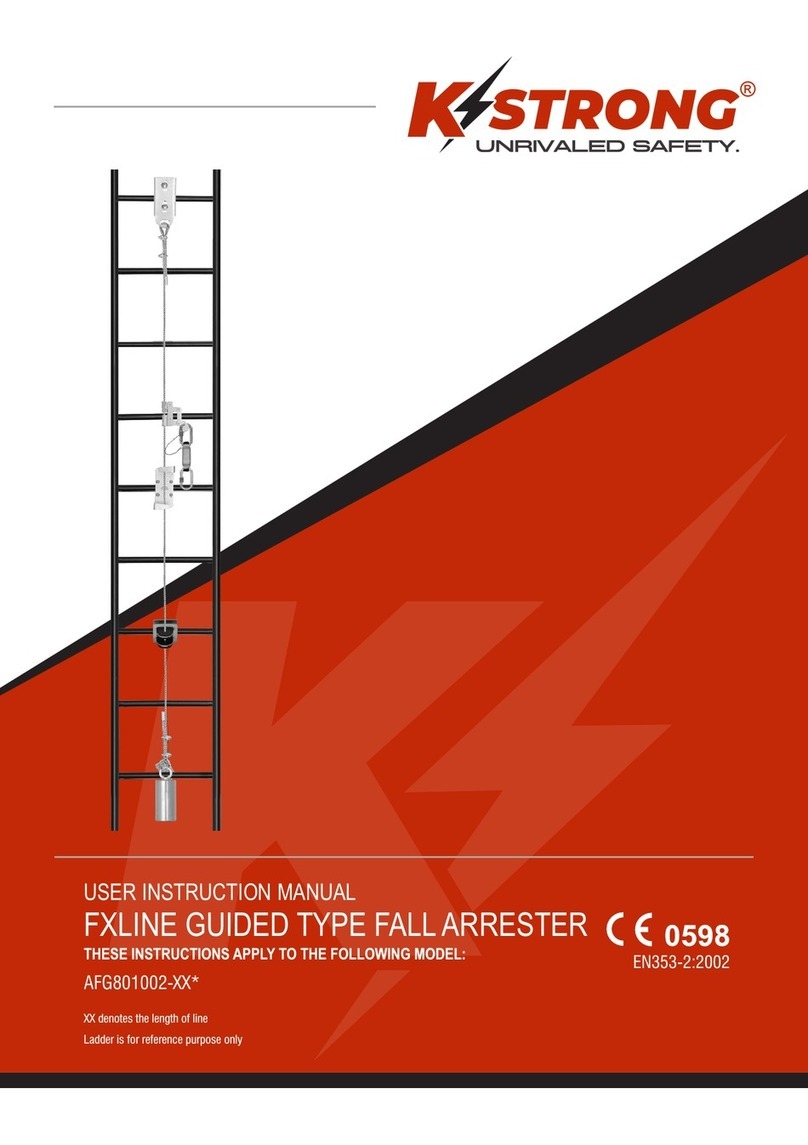
7. OPERATION:
Personal Fall Arrest System Components: Inspect and don a full body harness according to the manufacturer's instructions. Attach
the connecting subsystem (energy absorbing lanyard or SRL) to the dorsal connection on the harness.
ŸConnecting to the HLL System: Approach the work area using the appropriate access equipment. Connect the personal fall arrest
system to the HLL. Connectors must meet all compatibility and strength requirements.
Ÿ Do not take unnecessary risks, such as jumping or reaching too far from the edge of the working surface. Do not
allow the connecting subsystem to pass under arms or between feet. To avoid inadequate clearance, do not climb above the HLL. To
avoid swing fall hazards, do not work too far from either side of the HLL.
ŸTwo Persons Connected to the HLL: When a person falls while connected to the HLL, the system will deflect. If two persons are
connected to the same HLL, and one person falls, the second person may be pulled off the working surface due to deflection. The
potential for the second person falling increases as the HLL span length increases. The use of independent HLL systems for each
person, or shorter span length, is recommended to minimize the potential of the second person falling.
Ÿ
Hazardous Situations:
WARNING:
Both ends of the lifeline must be securely attached to appropriate anchors when in use. Never attach the end of the lifeline to a harness to use it
in the manner of a winch or SRL.
WARNING:
Do not alter or intentionally misuse this equipment. Use caution when using this equipment around moving machinery, electrical and chemical
hazards, and sharp edges.
WARNING:
Consult your doctor if there is reason to doubt your fitness to absorb the impact from a fall arrest. Age and fitness can affect your ability to
withstand fall arrest forces. Pregnant women and minors must not use this system.
Ÿ The personal fall arrest system must be rigged to limit free falls to 6 ft. (1.8 m) or less when using an energy absorbing lanyard,
or such that the SRL is overhead and without slack, according to OSHA requirements.
ŸSharp Edges: Avoid working where the connecting subsystem or other system components will be in contact with, or abrade against,
unprotected sharp edges. If working around sharp edges is unavoidable, a protective cover must be used to prevent cutting of the
personal fall arrest system components.
ŸIn the Event of a Fall: The responsible party must have a rescue plan and the ability to implement a rescue. Tolerable suspension time in
a full body harness is limited, so a prompt rescue is critical.
ŸRescue: With the number of potential scenarios for a worker requiring rescue, an on- site rescue team is beneficial. The rescue team is
given the tools, both in equipment and techniques, so it can perform a successful rescue. Training should be provided on a periodic basis
to ensure rescuers proficiency.
Free Fall:
CONNECTING SUBSYSTEM:
horizontal lifeline subsystem and harness fall arrest attachment element. The connecting subsystem must limit forces applied to the horizontal
lifeline to 900 lbs. (4.0 kN) or less.
The connecting subsystem is the portion of the personal fall arrest system that is used to connect between the
NOTE: Large throat-opening snap hooks should not be connected to standard size D-rings or similar objects which will result in a load on the
gate if the hook or D-ring twists or rotates. Large throat snap hooks are designed for use on fixed structural elements such as rebar or
cross members that are not shaped in a way that can capture the gate of the hook.
ŸIn a false engagement, where features that protrude from the snap hook or Karabiner catch on the anchor, and without visual
confirmation seems to be fully engaged to the anchor point.
ŸTo each other.
ŸDirectly to webbing or rope lanyard or tie-back (unless the manufacturer's instructions for both the lanyard and connector specifically
allows such a connection).
ŸTo any object which is shaped or dimensioned such that the snap hook or karabiners will not close and lock, or that roll-out could
occur.
04
